Diseases and Infection
Disease in plant crops is like a war being waged by microorganisms and insects. The main invaders of plant species are bacteria, fungi, insects, and viruses.
Many of the individual invaders are not visible to the naked eye but can be seen either under a microscope or when enough of them congregate together. In the first set of pictures below the diseases have been caused by
bacteria which are too small to be seen with your eyes.
 |
 |
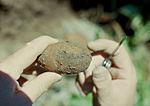 |
Figure 6 - Bean bacterial blight
(click to enlarge) |
Figure 7 - Onion bacterial rot
(click to enlarge) |
Figure 8 - Potato ring rot
(click to enlarge) |
 |
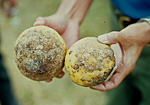 |
 |
Figure 9 - Bacterial stalk rot
(click to enlarge) |
Figure 10 - Bacterial canker
(click to enlarge) |
Figure 11 - Bacterial leaf spot
of pepper (click to enlarge) |
|
 |
|
|
Figure 12 - Bacterial cells
(click to enlarge) |
|
In the following pictures, diseases of fruit, vegetables and sunflower were caused by different fungi.
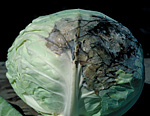 |
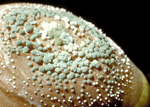 |
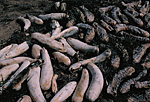 |
Figure 13 - Cabbage downy
mildew (click to enlarge) |
Figure 14 - Pear blue mold
(click to enlarge) |
Figure 15 - White mold on
squash (click to enlarge) |
 |
 |
Figure 16 - Verticillium wilt of
sunflower (click to enlarge) |
Figure 17 - Fungus spores
(click to enlarge) |
Insects that are very tiny can still inflict major damage on the plants that we grow for food.
 |
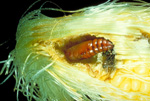 |
Figure 18 - Green peach aphid
(click to enlarge) |
Figure 19 - Corn earworm
(click to enlarge) |
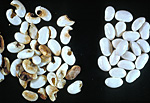 |
 |
Figure 20 - Western bean
cutworm damage
(click to enlarge) |
Figure 21 Apple maggot damage
(click to enlarge) |
Viruses can cause many different phenotypes in the plants that they infect.
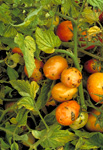 |
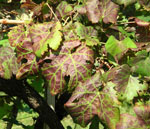 |
 |
Figure 22 - Tomato
spotted wilt virus
(click to enlarge) |
Figure 23 - Grape leaf roll virus
(click to enlarge) |
Figure 24 - Virus particles
(click to enlarge) |
There are several groups of plant parasitic nematodes that cause reduced harvest or crop losses. Some of these result in damage that is easily visible, such as the formation of characteristic galls on the roots of the infected plants.
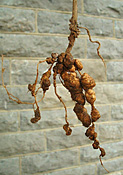 |
 |
Figure 25 - Root knot
disease (click to enlarge) |
Figure 26 - Nematode and
nematode egg (click to enlarge) |
It is not always easy to decide what organisms are causing the disease symptoms that we see on our fruits, vegetables, crops and ornamental plants. Scientists have developed many tools for identifying which organisms are causing disease.
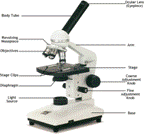 |
 |
| Figure 27 - Microscope |
Figure 28 - Polymerase chain
reaction (PCR) thermal cycler
(see Activity 6 for more information) |
 |
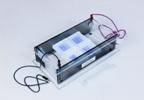 |
| Figure 29 - Magnifying glass |
Figure 30 - Gel electrophoresis unit |
The above photos show a number of tools plant pathologists use to understand what is causing disease and how the plant reacts.
Once a disease has been identified, it is possible to begin to find ways to stop the spread of the disease and to develop plants that are not susceptible to the microorganism and so can stay healthy.
Go to Activity 2 (Gel electrophoresis - What is it? How does it work?)
Go to Activity 3 (Restriction enzyme digestion - How does it work? Why is it useful?)
